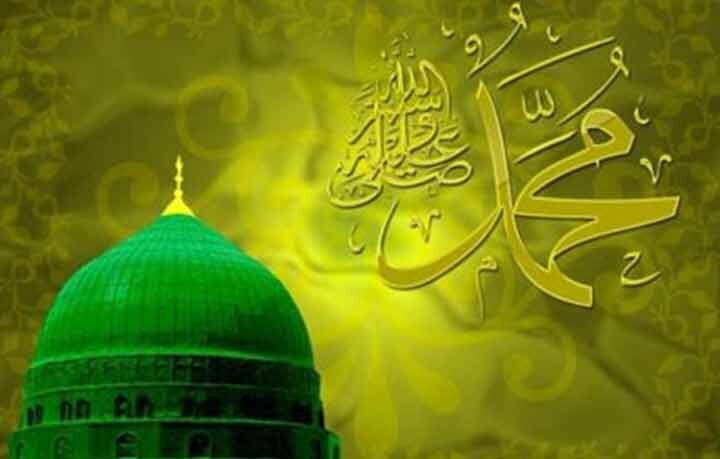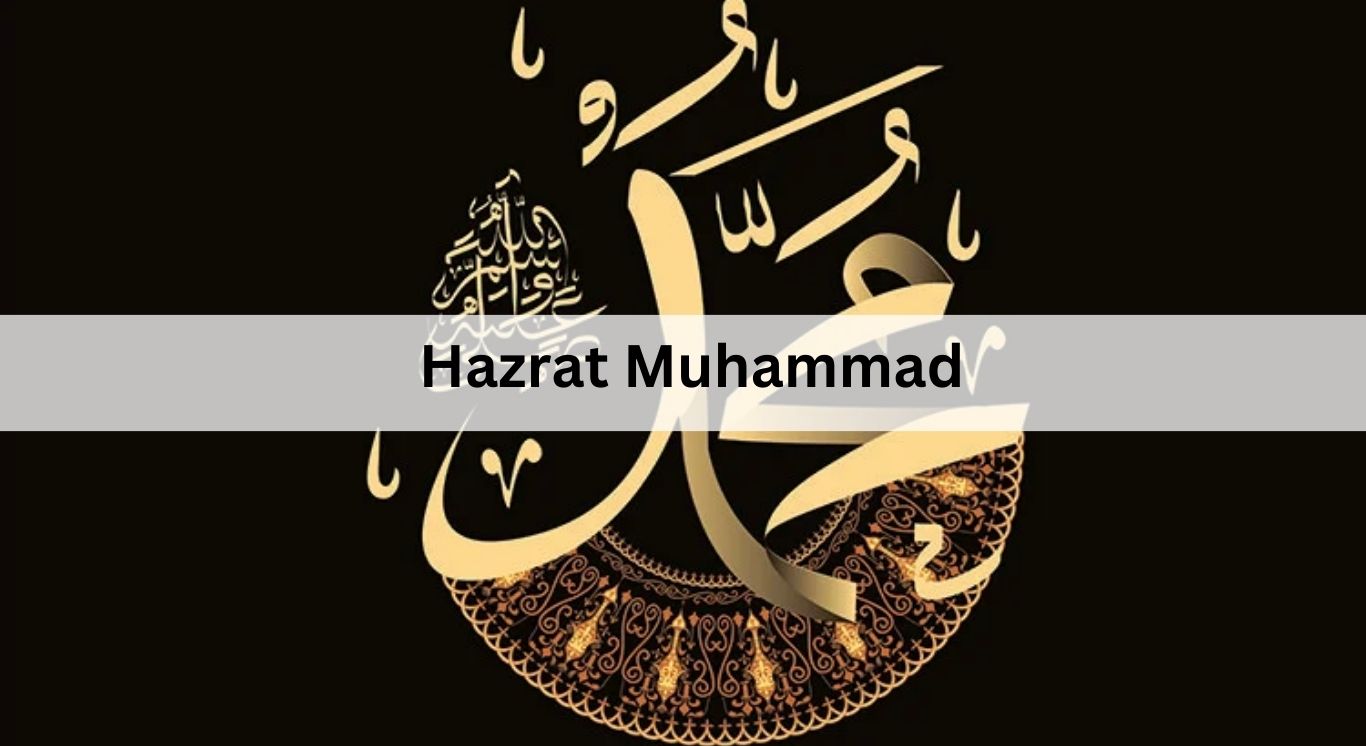When I learned about Prophet Muhammad ﷺ, I felt close to him. His kindness, patience, and love for people touched my heart. He became my guide and a light in life.
Hazrat Muhammad (Short answer)
Prophet Muhammad ﷺ, the last messenger of Islam, was born in the city of Mecca in the year 570 CE. He spread the message of peace, unity, and belief in one God. His teachings guide millions worldwide.
This article explores the life, noble character, and powerful message of Prophet Muhammad ﷺ, highlighting how his example continues to guide people around the world. From his early years in Mecca to his role as a prophet and leader, we’ll explore how his teachings continue to inspire millions even today.
Introduction
Few historical figures have influenced the world as profoundly as Hazrat Muhammad (peace be upon him). As the final prophet of Islam, he led a revolution in spiritual thought and moral, political, and social reform. His journey from birth in Mecca to passing in Medina is a strong example of patience, bravery, and deep change.
Who Was Hazrat Muhammad?

Prophet Muhammad ﷺ was born in 570 CE in Mecca and came from the honorable Banu Hashim clan of the Quraysh tribe. He is believed by Muslims to be the final messenger of Allah, tasked with guiding humanity through divine revelation, which would become known as the Quran. His mission changed the course of history and continues to impact billions of lives today.
Why Is He Important in World History?
From founding a major world religion to transforming Arabian society, Hazrat Muhammad’s legacy goes beyond faith. He preached justice, equality, and compassion at a time of tribal warfare and oppression. His teachings laid the groundwork for Islamic civilization, which would influence science, art, governance, and law for centuries.
Hair of the Prophet Muhammad ﷺ (Blessed Hair – Bal Mubarak)
The Prophet’s hair had a soft wave to it, neither completely straight nor very curly, but naturally balanced in texture. It usually reached up to his earlobes or shoulders, depending on the time. It was always clean, black, and beautifully maintained. His companions treasured strands of the Prophet’s hair as cherished mementos.
Hands of Prophet Muhammad ﷺ (Blessed Hands – Hath Mubarak)
His hands were described as softer than silk, and whenever he touched someone, that person would feel coolness, comfort, and blessings. People loved shaking hands with him. His handshake left a long-lasting sweet scent that even perfumes couldn’t match.
Feet of the Prophet Muhammad ﷺ (Blessed Feet – Qadam Mubarak)
His noble feet were known to be beautifully shaped and perfectly balanced. The soles of his feet were smooth, and his footsteps were light, yet his walk was full of dignity and strength. As he walked, it appeared as though he was gently coming down a slope.
Early Life of Hazrat Muhammad
Birth and Lineage
Muhammad ibn Abdullah was born in 570 CE, a year famously remembered as the “Year of the Elephant,” marking an important event in the history of Arabia. His father, Abdullah, died before he was born. The Prophet was orphaned, losing his father before birth and his mother, Amina, at age six.
Childhood and Upbringing
After his parents’ passing, Prophet Muhammad ﷺ was cared for by his grandfather and later his uncle Abu Talib. As he grew, he became well-known for his honesty and strong moral character. Despite the hardships, he developed a character rooted in humility, patience, and trustworthiness.
The Role of Abdul Muttalib and Abu Talib
Abdul Muttalib raised young Muhammad with care, imparting tribal customs and values. After his passing, Abu Talib became Muhammad’s protector, standing by him even when the Prophet faced severe opposition during his mission.
His Character Before Prophethood
Even before he received revelation, Muhammad was called Al-Amin, the trustworthy, by the people of Mecca. He gained this reputation due to his integrity in business, his ability to resolve disputes fairly, and his kind and respectful demeanor.
How many years did Hazrat Amina raise the Prophet Muhammad (PBUH)?
Hazrat Amina raised the Prophet for about 6 years. She cared for him with great love after his father’s death. Tragically, she died when the Prophet was just six years old, while they were traveling to see relatives near Medina.
How Many Years Did Hazrat Halima Breastfeed Prophet Muhammad (PBUH)?
The Prophet Muhammad received loving care and nurturing from Hazrat Halima Saadia during his early years. She was his foster mother. Later, she kept him longer because of the blessings he brought to her home. He spent around four years under her care.
How Many Years Did Abdul Muttalib Raise the Prophet Muhammad (PBUH)?
After the passing of Amina, the Prophet’s grandfather, Abdul Muttalib, looked after him for two years. He had great affection for Muhammad and gave him special attention. Prophet Muhammad came under Abu Talib’s care after Abdul Muttalib passed away.
How Many Years Did Abu Talib Raise the Prophet Muhammad (PBUH)?
Abu Talib cared for Prophet Muhammad for many years after his grandfather’s death. He supported him from age 8 until his death, including during the hardest years of prophethood. Abu Talib’s love and loyalty drove him to protect the Prophet.
When Did Prophet Muhammad (PBUH) First Go To Syria For Trade?
At the age of 12, the Prophet accompanied his uncle Abu Talib on a trading trip to Syria. During this trip, they met a Christian monk named Bahira, who recognized signs. He saw signs of prophethood in the young Muhammad and advised Abu Talib to look after him carefully.
When did Prophet Muhammad (PBUH) go to Syria for the second time for trade?
When he was 25 years old, the Prophet went to Syria once more, this time as a trader representing Hazrat Khadijah. He earned great respect for his truthfulness and remarkable business abilities. His successful trade journey impressed Khadijah, leading her to propose marriage.
How old was Prophet Muhammad (PBUH) when he married Hazrat Khadijah?
At the age of 25, Prophet Muhammad ﷺ married Khadijah, who was 40 at the time. Their marriage was respectful and loving and lasted for 25 years until her death. They had six children, including Fatimah.
Why Did Prophet Muhammad (PBUH) Marry Hazrat Khadijah?
Hazrat Khadijah was impressed by the Prophet’s truthfulness and integrity. She proposed marriage. He agreed because she was kind, wise, and supportive. Their union brought peace and support. Khadijah was the first to accept Islam and provided constant support and encouragement to the Prophet throughout his journey.
How Many Sons and Daughters Did Prophet Muhammad ﷺ Have?
1. Sons of Prophet Muhammad ﷺ:
- He had three sons.
- All of them passed away in early childhood.
- Despite losing his sons, he remained patient and trusted Allah’s will.
2. Daughters of the Prophet Muhammad ﷺ:
- He had four daughters.
- All of them accepted Islam and supported their father’s mission.
- His daughters were strong, faithful, and loved by him deeply.
Children of the Prophet Muhammad ﷺ:
| Name | Relation | Mother | Life Details |
| Qasim | Son | Khadijah (RA) | Their first child died at a young age. |
| Zainab | Daughter | Khadijah (RA) | Married to Abu al-As. |
| Ruqayyah | Daughter | Khadijah (RA) | Married to Uthman (RA). |
| Umm Kulthum | Daughter | Khadijah (RA) | Also married to Uthman (RA) after Ruqayyah’s passing. |
| Fatimah Zahra | Daughter | Khadijah (RA) | Fatimah, the beloved daughter, married Ali and had two sons, Hasan and Husayn. |
| Abdullah | Son | Khadijah (RA) | Named Tayyib and Tahir, he died when he was still a baby. |
| Ibrahim | Son | Maria al-Qibtiyya | “He was born in Medina and died at the age of around 16 to 18 months.” |
Contentment (Qana’at) of Prophet Muhammad ﷺ
Prophet Muhammad ﷺ lived a life of simplicity. He was content with whatever Allah provided. He never complained about poverty or luxury. Even when he had wealth, he gave it away and lived humbly. His heart was satisfied with little, teaching us to be grateful in all situations.
Equality (Masawat) of the Prophet Muhammad ﷺ
Prophet Muhammad ﷺ treated all people the same, whether rich or poor, Black or White, enslaved or free, showing no favoritism. He said, “All humans are equal, like the teeth of a comb.” He sat with slaves, ate with the poor, and never showed pride. He taught that only taqwa (piety) makes one better.
Mercy (Rahmat) of Prophet Muhammad ﷺ
He was called “Rahmatul-lil-Alameen,” a mercy for all worlds. Even when enemies hurt him, he forgave them. He showed mercy to animals, children, the poor, and even non-believers. He had a heart filled with kindness and compassion for all. His mercy continues to inspire the world.
Kindness (Shafqat) of Prophet Muhammad ﷺ
The Prophet ﷺ showed genuine kindness and heartfelt compassion to everyone he encountered. He visited the sick, helped the needy, and comforted the sad. His warm demeanor and gentle words earned him universal affection and regard. He never spoke harshly and always encouraged gentleness and kindness in behavior.
Generosity (Sakhawat) of Prophet Muhammad ﷺ
He was the most generous person. He provided for the needy, offering food, clothing, and financial support. He always helped others and never refused anyone in need. Though he had limited resources, his generosity knew no bounds, giving selflessly for the sake of Allah, not for human recognition.
Modesty (Haya) of the Prophet Muhammad ﷺ
The Prophet ﷺ showed great humility in the way he acted, dressed, and spoke. He avoided vulgar talk, lowered his gaze, and dressed simply. He disliked pride and arrogance. His modesty was so profound that his companions described him as being more shy than a veiled maiden in seclusion.
Humility (Tawadhu / Jabbah Aysar)
Despite being the Prophet of Allah, he was humble. He sat humbly on the ground, repaired his own clothes, and shared meals with the poor. He never acted superior to anyone. He preached humility, saying, “Whoever humbles themselves for the sake of Allah will be exalted by Him.
Justice (Adl O Insaf) of Prophet Muhammad ﷺ
He always stood for justice, even if it was against his people. He judged fairly, without favoring anyone. In disputes, he listened to all sides. He warned against lying and cheating. He said, “A nation that does not uphold justice will fall.”
Hospitality (Mehman Nawazi) of Prophet Muhammad ﷺ
He warmly welcomed guests, offered food, and cared for their comfort. Even when uninvited guests came, he smiled and served them with respect. His home was simple, yet filled with love and hospitality. He stressed the importance of welcoming guests as a core part of faith.
Love for Children (Bachon Par Shafqat)
The Prophet ﷺ showed great love to children. He hugged them, played with them, and carried them on his shoulders. He shortened prayers if a child cried. He lovingly kissed his grandchildren and encouraged others to show kindness and gentleness. He said, ‘Anyone who doesn’t show kindness to children is not one of us.”
Following the Sunnah of the Prophet ﷺ
The Sunnah refers to the Prophet’s teachings, actions, and way of life. Following the Sunnah means living like he did: praying, speaking kindly, being honest, and showing mercy. This act brings blessings from Allah in this world and great rewards in the Hereafter. His life stands as a flawless model for everyone to follow.
The Call to Prophethood
Revelation at the Cave of Hira
At 40, Muhammad ﷺ received his first divine revelation in the Cave of Hira through the angel Jibreel (Gabriel), with the verses “Read in the name of your Lord who created…” marking the beginning of the Quranic revelations.
First Believers
Khadijah, his wife, showed unwavering support, becoming the first believer in his prophetic message. Others soon followed, including his cousin Ali, friend Abu Bakr, and his servant Zayd ibn Harithah. These early Muslims laid the foundation of the Islamic faith.
Early Challenges and Opposition in Mecca
The Quraysh opposed Muhammad’s teachings fiercely. They ridiculed him, ostracized his followers, and conspired against his life. Yet he stood firm, preaching with wisdom, love, and perseverance.
The Message of Islam
Monotheism and Equality
Muhammad’s message was revolutionary: There is only one God (Allah), and all people are equal regardless of race or status. This directly challenged the polytheistic, tribal hierarchy of Mecca.
Social and Moral Reforms
Islam forbade many injustices of the time: female infanticide, slavery, and exploitation. It emphasized caring for the poor, treating women with respect, and living an honest life guided by divine principles.
The Quran: Divine Revelation
The Quran was gradually revealed to the Prophet Muhammad ﷺ over 23 years, guiding his mission. It is the holy book of Islam, filled with spiritual guidance, ethical principles, scientific insights, and historical lessons.
Migration to Medina (Hijrah)

Reasons for the Migration
In 622 CE, facing growing persecution, Prophet Muhammad ﷺ and his followers left Mecca and migrated to Yathrib (later called Medina), where the local tribes warmly received them and sought his leadership to settle their disputes.
Establishing A New Muslim Community
In Medina, the Prophet built the first mosque and created a society based on justice, equality, and mutual support. He created the Constitution of Medina, guaranteeing religious freedom and fostering cooperation between Muslims, Jews, and pagans.
Brotherhood Between Muhajirun and Ansar
The Prophet created a system of pairing migrants (Muhajirun) with helpers (Ansar) to ensure everyone had support. This unity became the foundation for the growing Muslim community.
Key Events In Medina
Battles Of Badr, Uhud, And Khandaq
- Badr (624 CE): A miraculous Muslim victory against the Quraysh despite being outnumbered.
- The Battle of Uhud in 625 CE was a major setback for the Muslims, caused by a strategic mistake.
- Khandaq (627 CE): Muslims successfully defended Medina using innovative tactics, like digging a trench.
Treaty Of Hudaybiyyah
In 628 CE, the Prophet signed a peace treaty with the Quraysh, allowing Muslims to perform pilgrimage later. Though seen as a setback, it allowed Islam to spread without conflict.
Conquest Of Mecca
In 630 CE, Prophet Muhammad ﷺ entered Mecca with an army of 10,000 followers. He entered peacefully, forgave his enemies, and removed all idols from the Kaaba. His mercy won the hearts of many.
The Final Years
The Farewell Pilgrimage
In 632 CE, he performed his last Hajj. Over 100,000 companions joined him. This event symbolized the unity of the Muslim Ummah.
The Last Sermon And Its Message
In his famous sermon, he emphasized:
- Racial equality
- Women’s rights
- Respect for life and property
- Sticking to the Quran and Sunnah
Death Of Hazrat Muhammad
Soon after returning to Medina, Prophet Muhammad ﷺ became ill and passed away on June 8, 632 CE, at the age of 63. His death was a moment of sorrow, but his teachings continued to shine.
Legacy Of Hazrat Muhammad
Influence On Religion And Society
Hazrat Muhammad’s influence extended to law, governance, education, family life, and spirituality. His teachings are followed by over 1.9 billion Muslims worldwide today.
Spread Of Islam After His Death
Under the leadership of his companions like Abu Bakr, Umar, Uthman, and Ali, Islam spread rapidly across the Middle East, North Africa, Europe, and Asia within decades.
His Role As A Leader And Reformer
He was a statesman, general, teacher, husband, and friend. He built a society that prioritized justice, education, compassion, and unity principles still admired today.
FAQs
1. What Was Hazrat Muhammad’s Full Name?
Muhammad ibn Abdullah ibn Abdul-Muttalib ibn Hashim.
2. What Is Hazrat Muhammad’s Date Of Birth?
He was born on 12th Rabi’ al-Awwal in the year 570 CE.
3. When Was Prophet Muhammad Born In Islamic Date?
He was born on the 12th of Rabi’ al-Awwal, Year of the Elephant.
4. Did Prophet Muhammad Accept Christianity?
No, but he respected Jesus (Isa) as a prophet and believed in the Injil (Gospel) as a divine scripture revealed before the Quran.
5. What Happened After Prophet Muhammad’s Death?
His companions (Sahabah) carried forward his mission. Abu Bakr became the first Caliph and Islam expanded rapidly.
6. Who Led After Muhammad Died?
Abu Bakr Siddiq was elected as the first Caliph (successor).
7. What Is The Proof Of Muhammad’s Existence?
Historical records from Muslim and non-Muslim sources, archaeological findings, and preserved manuscripts confirm his life.
8. What Did Jesus Say About Islam?
According to the Quran, Jesus foretold the coming of a prophet after him named Ahmad (another name of Muhammad).
9. Which Is Older, Islam Or Christianity?
Christianity predates Islam as a formal religion, but Islam views itself as the final continuation of monotheism dating back to Adam.
10. Which Angel Delivered The Quran To Muhammad?
The angel Jibreel (Gabriel) delivered the revelations from Allah to Prophet Muhammad.
11. Which Prophets Were Killed In Islam?
Several prophets were persecuted and killed, including Yahya (John the Baptist) and Zakariya (Zechariah), according to Islamic tradition.
12. How Old Is Islam In Years?
Islam is over 1,400 years old, dating back to 610 CE when the first revelation occurred.
13. What Did Prophet Muhammad Look Like?
He was described as of medium build, with a radiant face, wide black eyes, and a gentle presence that inspired love and respect.
Conclusion
Hazrat Muhammad (peace be upon him) lived a life that continues to echo through time. His story is one of resilience, love, reform, and divine purpose. From the deserts of Arabia, his message of monotheism and morality spread across continents and generations. Whether Muslim or non-Muslim, anyone can find inspiration in his remarkable journey.

